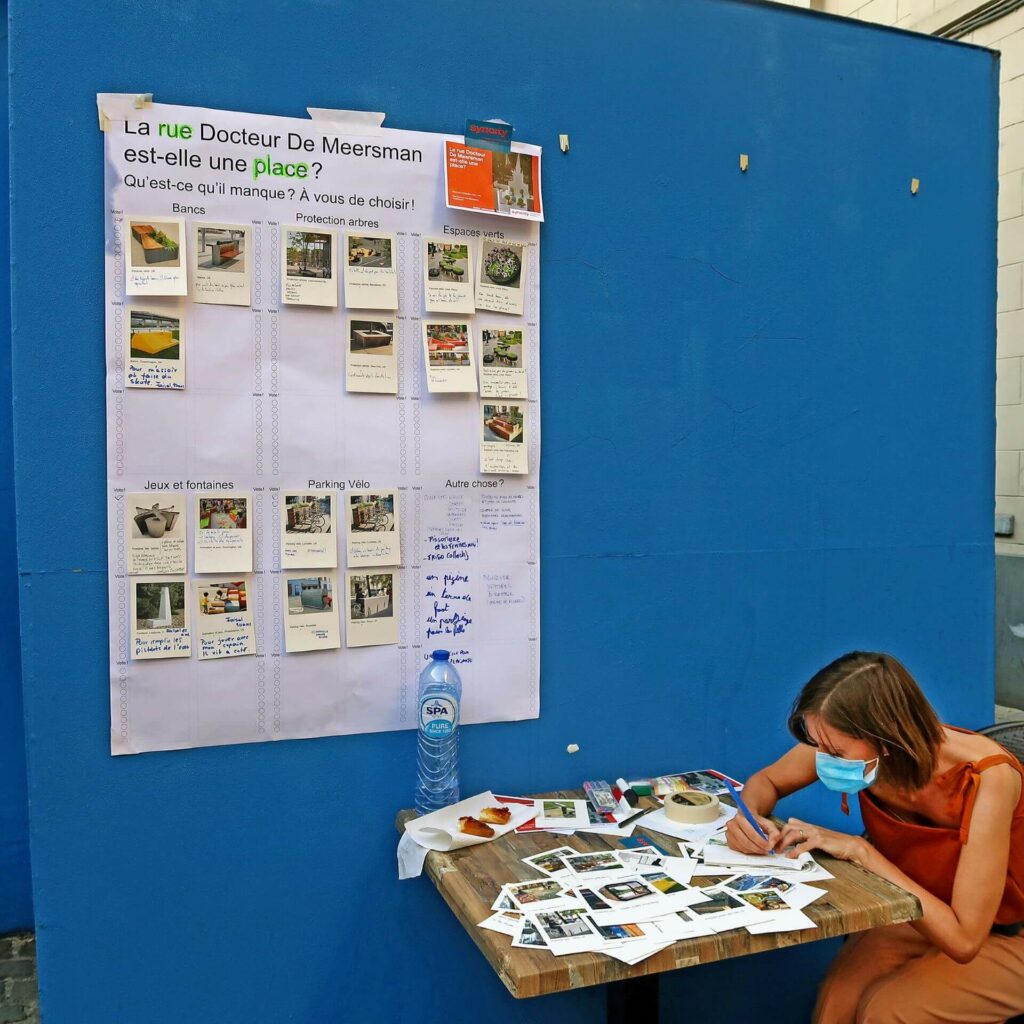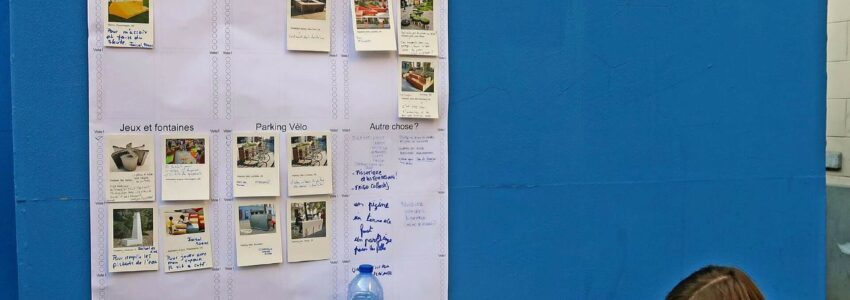01 Choose your urban furniture
An interactive method to imagine possible ways of transforming a public space with urban furniture.
Select examples of urban furniture
The first step is to explore the public space in question to identify the existing urban furniture (including its limitations) and see if additional features are needed. The second step is to reflect on the function(s) of each individual type of urban furniture (e. g. benches, bike parking, flower beds needed). Each function is related to a certain type of usage and can enhance and / or disrupt other usages. Keep in mind that introducing new urban furniture can lead to new conflicts in the public space. For instance, benches attract young people to spend time in the public space, but loud groups can disturb residents. The last step is selecting examples with different design proposals: shape (e. g. height, depth) and materials (e. g. wood, concrete). This takes into account the ergonomic characteristics, the aesthetic value and the maintenance requirements of the urban furniture. The final selection of examples should include a wide variety of designs with the same function to allow comparison.
Hold the workshop
Present the examples in a way that can be easily understood by the users of the space. Print the examples on card-type formats with a photo of the urban furniture in a real-world setting. Include the function and source (designer, city and country), and leave space for comments. Print or draw a grid on a large paper format, divided according to the different functions of the urban furniture. Divide the participants into small groups (1 – 3 people) and provide explanations and take notes. The objective is not selecting one particular object to be replicated in the public space, but gathering inspiration for designing the most appropriate urban furniture for that particular public space.
Who is it for
Users of a public space
How does it work
It provides the participants with inspiring examples of urban furniture and facilitates a discussion on the most suitable solutions.
Why, what for
It enables people to express their aspirations about the future of a public space, and makes them visible to others.
Who can do it and what do you need for it
Competences: skills in using a layout program (alternatively, it can be done in OpenOffice), facilitation skills.
Materials: cardboard for printing the cards (A6), a printed grid to categorise the examples (A0), pencils, sticky notes, a rigid support used as display.
At what phase in a planning process
After completing the site diagnostic /
in the co-design phase
Estimated budget
€ 150
syncity Contact
Catalina Dobre, catalina.dobre(at)ulb.be

Further reading:
Sanches, Maria G. and Lois
Frankel. 2010. ‘Co-design in
Public Spaces: An Interdisciplinary Approach to Street Furniture Development’, in Durling, D., Bousbaci, R., Chen, L, Gauthier, P., Poldma, T., Roworth-Stokes, S. and E. Stolterman (eds.), Design and Complexity — DRS International Conference 2010, 7-9 July 2010, Montreal, Canada.
*
Sanders, Liz and Pieter J. Stappers. 2014. ‘From Designing to Co-designing to Collective Dreaming. Interactions 21(6): 24 – 33.
*
Sobral, Laura. 2013. ‘Co-created Street Furniture as a Catalyst for Urban Culture and Public Life’. Hacking Urban Furniture Website. Retrieved 7 / 02 2021 from http://www.hackingurbanfurniture.net/research/co-created-streetfurniture-as-a-catalyst-forurban-culture-and-public-life/.

